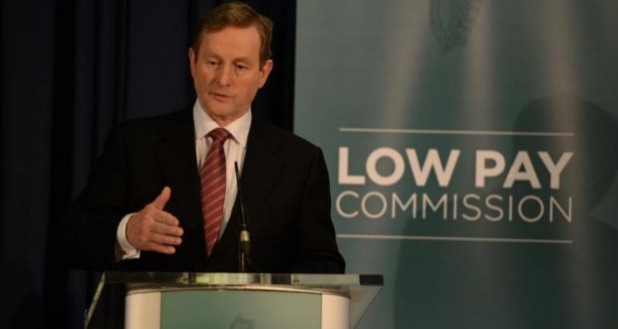From a Minimum Wage to a Living Wage
If you’re someone in their twenties or thirties who’s working in the retail or hospitality industries and earning the current minimum wage of €9.15 per hour, then you should mark a date in your calendar: January 1st… 2029. If the minimum wage continues to increase at the current rate, this future date is when it’s estimated you’ll be earning €11.45 per hour. However, who knows how much €11.45 will be worth 13 years from now! Will there be much change, if any, after you buy yourself a loaf of bread and a litre of milk? Will it cost that much just to get into town and back on the bus or tram?
The point is that since April 2000, the year the the minimum wage was introduced, the increases in the hourly rates have always been below the threshold where it’s possible to make ends meet. This limit is known as the ‘Living Wage’ And this week, the Low Pay Commission have recommended to the Government that the minimum wage be increased from the current €9.15 per hour to €9.25 per hour – an increase of 10 cent. If the government agrees, then 70.000 of the lowest paid workers in the state will see an increase in their weekly wage of just €4.00 a week.
Business groups such as Retail Ireland and the Irish Small and Medium Enterprises Association (ISME) have, naturally, come out against the wage increase. According to Retail Ireland, we are now living in times of uncertainty following the recent Brexit vote.
Retail Ireland Director Thomas Burke said, “There is absolutely no economic basis for a further minimum wage increase, following the 6% increase earlier this year. Any additional rise will put further pressure on thousands of retail businesses that are already grappling with intense competitive pressures and a rising cost base.”
“The UK vote to leave the EU has led to a major sterling devaluation and raised the spectre of a return to cross border shopping. To further increase input costs for Irish retailers at this time will reduce our ability to compete with shops north of the border. The minimum wage is already 6% higher than in the UK and this gap will widen if sterling falls further, as is predicted.”
The ISME believe that the minimum wage should be replaced with a “Minimum Incomes Policy”, where all low paid employees can earn up to €20,000 per annum before being considered for any kind of taxation. ISME CEO, Mark Fielding said, “People are not in poverty because the minimum wage is too low, or because their hourly pay is too low, even when they make above the minimum wage. People are in poverty because they are not working or not working enough. They need jobs, not an increase in the minimum wage. The reality is that almost one in four people aged under 60 live in households where no one works, which is more than double the EU average”.
You can’t blame organisations like Retail Ireland and the ISME for trying to look after the interests of their members. But the truth is Retail Ireland are trying to up the fear factor by raising the spectre of Brexit and mass shopping trips to Northern Ireland in order to justify sustaining low wages. As for the ISME’s policy of a Minimum Incomes Policy? That’s basically asking the Government to take a hit so that employers can continue to pay these paltry rates.
The Anti-Austerity Alliance (AAA) has described the 10 cent increase as a ‘slap in the face’ for low paid workers. The AAA’s Mick Barry, the TD for Cork North–Central said, “this measly increase of 10 cent an hour is disgusting and shows how out of touch the government are with the lives of low paid workers. Unfortunately, it [the Low Pay Commission] has lived up to its name. This is the reality of leprechaun economics – huge pots of gold for the multi-national tax evaders with tiny pay increases for the ‘little people’.”
When Mick Barry speaks of ‘leprechaun economics’, he’s referring to the figures released by the Central Statistics Office showing that Ireland’s economic growth has risen by an extraordinary 26% in the past year – mainly due to the actions of a small group of multinational companies based in Ireland. This means that Ireland has to pay an extra €280 million to the E.U. “No problem”, says the government, “we’ll find the money and it won’t affect future budgets”. Another example of our Government looking after big business and getting the taxpayer to foot the bill.
We live in a country where the cost of living is constantly rising but, unfortunately salaries are struggling to keep up. In 2015, out of the cohort who were who were considered living below the ‘poverty line’ almost 12% are at work. These are known as the ‘the working poor’ and they represent 5% of all workers in Ireland. That’s almost 100,000 employed people who are living in poverty. This is unacceptable. The Government needs to stand up to the likes of Retail Ireland and the ISME and tell them to realise that the worker is their greatest asset and to look after them accordingly.









